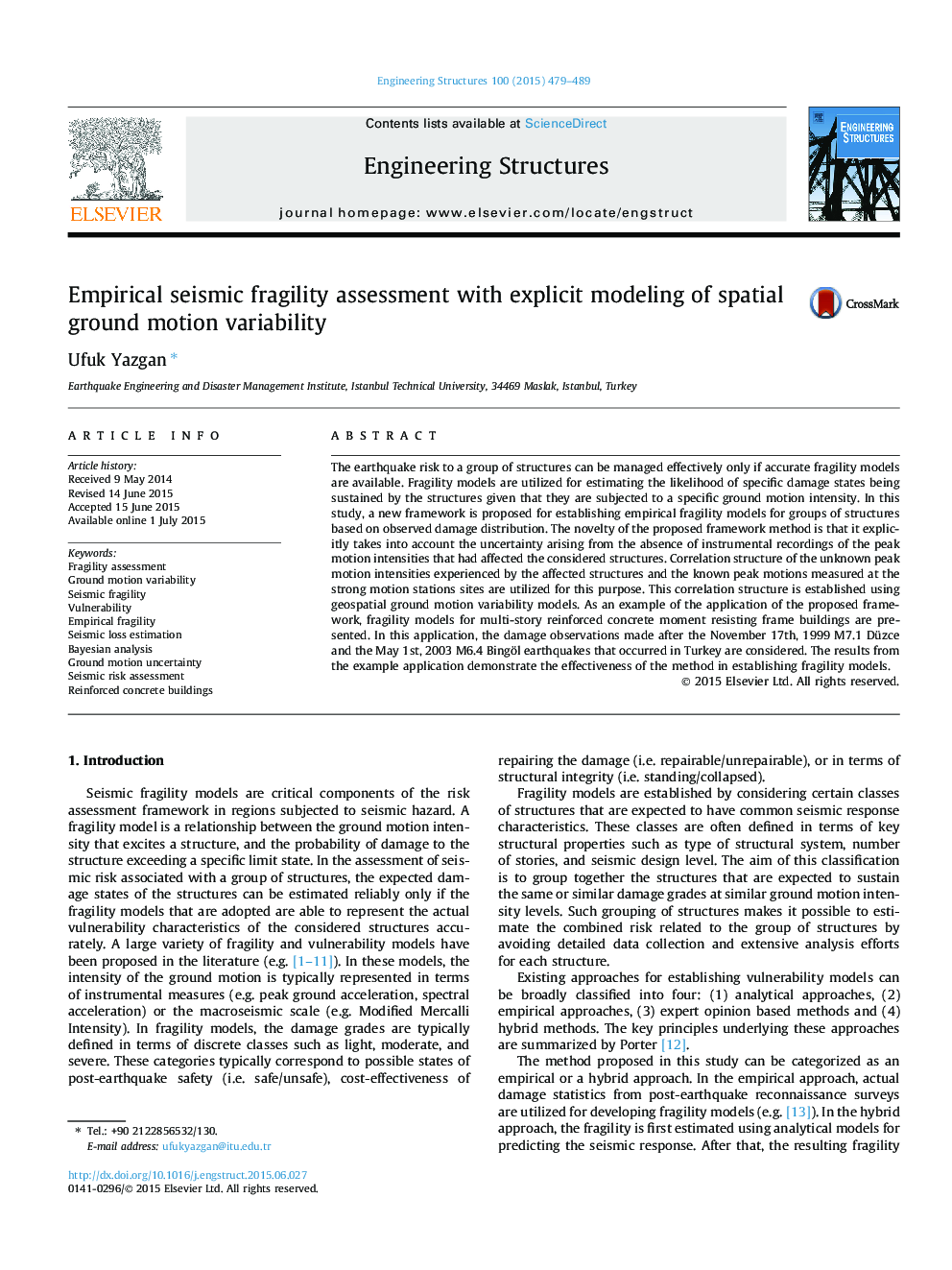| Article ID | Journal | Published Year | Pages | File Type |
|---|---|---|---|---|
| 266133 | Engineering Structures | 2015 | 11 Pages |
•A new method to establish empirical fragility models is proposed.•Post-earthquake damage observations are utilized to develop fragility curves.•The uncertainty related to ground motion intensities at the damage observation sites is taken into account.•This uncertainty is due to geospatial variability of ground motion intensities and the sparseness of strong motion networks.•Fragility curves are developed for reinforced concrete buildings with limited ductility capacity.
The earthquake risk to a group of structures can be managed effectively only if accurate fragility models are available. Fragility models are utilized for estimating the likelihood of specific damage states being sustained by the structures given that they are subjected to a specific ground motion intensity. In this study, a new framework is proposed for establishing empirical fragility models for groups of structures based on observed damage distribution. The novelty of the proposed framework method is that it explicitly takes into account the uncertainty arising from the absence of instrumental recordings of the peak motion intensities that had affected the considered structures. Correlation structure of the unknown peak motion intensities experienced by the affected structures and the known peak motions measured at the strong motion stations sites are utilized for this purpose. This correlation structure is established using geospatial ground motion variability models. As an example of the application of the proposed framework, fragility models for multi-story reinforced concrete moment resisting frame buildings are presented. In this application, the damage observations made after the November 17th, 1999 M7.1 Düzce and the May 1st, 2003 M6.4 Bingöl earthquakes that occurred in Turkey are considered. The results from the example application demonstrate the effectiveness of the method in establishing fragility models.
